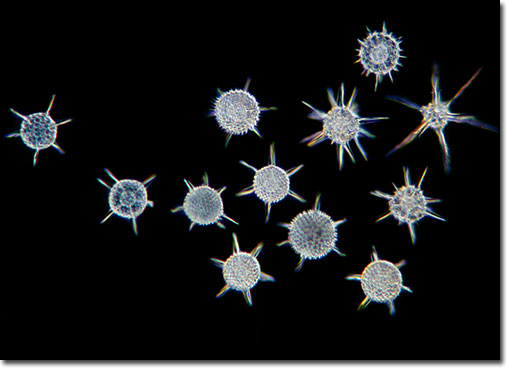|
Typically, radiolaria are more familiar as skeletons than as living creatures. In fact, it was the discovery of ancient tests in the form of a large deposit of ooze along the ocean floor by the nineteenth century Challenger expeditions that first truly revealed their tremendous variation in design, as well as their unique splendor. Some of the hand-drawn illustrations produced from the samples obtained by the ship are so magnificent that they rival many of the photomicrographs of the microscopic creatures taken in modern times. However, radiolarian ooze is not only important for the hidden beauty it contains, but also for the fact that when parts of the ocean beds were raised and changed into terra firma, the substance became sedimentary rock, such as tripoli. Moreover, flint, chert, and other silica deposits derive from the skeletal remains of radiolaria.
|
